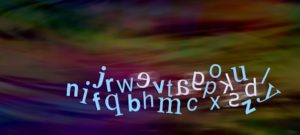 4th October is World Dyslexia Awareness Day. Around 5-10% of the population experience dyslexia, which equates to around 700 million people worldwide.
4th October is World Dyslexia Awareness Day. Around 5-10% of the population experience dyslexia, which equates to around 700 million people worldwide.
What is dyslexia?
Dyslexia is a specific learning difficulty, or difference. In very simple terms it is a difference in the way that the brain processes information; it can have a big impact on the way that a student learns in the classroom.
Signs of dyslexia can be:
- confuse visually similar words such as cat and cot
- spell erratically
- find it hard to scan or skim text
- read and or write slowly
- need to re-read paragraphs to understand them
- find it hard to listen and maintain focus
- find it hard to concentrate if there are distractions
- feel sensations of mental overload/switching off
- have difficulty telling left from right
- get confused when given several instructions at once
- have difficulty organising thoughts on paper
- often forget conversations or important dates
- have difficulty with personal organisation, time management and prioritising tasks
- avoid certain types of work or study
- have poor self-esteem, especially if dyslexic difficulties have not been identified in earlier life
Dyslexia occurs in people of all backgrounds, intellectual levels and in both men and women equally. It is not something found only in children and it is not something you grow out of. Dyslexia runs in families; parents with dyslexia are very likely to have children with dyslexia.
Strategies for dealing with dyslexia
There are lots of study strategies available to learners with dyslexia. Here are some examples:
- Visual :
- make large colourful posters for important information
- highlight key passages in a different colours
- stick post-its where you will see them e.g. by the sink so you read them whilst brushing your teeth
- Aural (auditory-musical):
- record lessons or lectures
- record and listen to your revision notes
- Verbal :
- explain your essay structure, or key concepts to someone else. The act of having to mentally structure and then verbalise a concept to someone else can help with your own understanding and ability to remember.
- Organisational:
- deal with printed materials as soon as you receive them, check lists to make sure everything is there
- colour-coding: keep all lecture notes, essays and materials on a particular subject colour coded and filed together
- identify what’s important: use highlighters, post-its or annotations so you can find information easily
- use a planner: use your phone, computer or a handwritten planner to keep track of projects and deadlines on a daily basis. Work back from the deadline and set yourself realistic goals to complete the assignment on time
- reminders: set yourself reminders on your phone for lectures, tutor meetings and course deadlines
- minimise distractions: set yourself time for a task and switch off your phone, tv and radio. It can also help to keep your study sessions short, but regular
Strengths of dyslexia:
People with dyslexia are usually:
- good at working with pictures
- able to think multi-dimensionally
- have improved pattern recognition
- excel in hands on-learning
- highly creative
- think “outside the box”, problem solvers
- seeing the “bigger picture”
- have sharper peripheral vision
ABMA Education students with dyslexia can apply for reasonable adjustments during assessments. See our Reasonable Adjustments and Special Considerations Policy or speak to your centres ABMA Education Coordinator for more information.
Sources:
https://www.dyslexia-africa.com / https://www.bdadyslexia.org.uk/advice/adults / https://www.austinlearningsolutions.com/blog/38-dyslexia-facts-and-statistics.html
